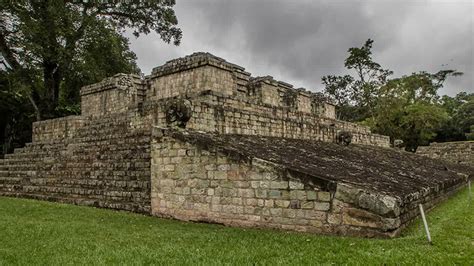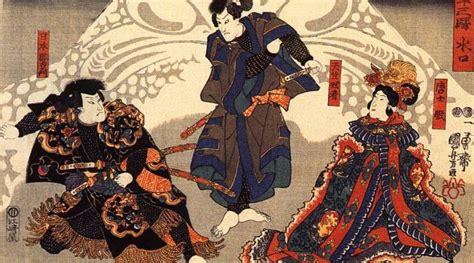Explore the rich history of Colombia from pre-colonial times to recent developments in this comprehensive blog post. Learn about political struggles, economic growth, and more.
Pre-Colonial Colombia
Contents
Pre-Colonial Colombia refers to the period before the arrival of the Spanish conquistadors in the early 16th century. During this time, the region was inhabited by various indigenous societies, each with their own distinct cultures, languages, and social structures. The most notable of these were the Muisca, Tairona, Quimbaya, and Calima peoples, who inhabited different parts of what is now Colombia. These societies were highly advanced, with developed agricultural systems, intricate trade networks, and sophisticated metalworking techniques. They also had complex social and political organizations, with some societies establishing powerful chiefdoms and confederations.
One of the most remarkable features of Pre-Colonial Colombia was the incredible diversity of the indigenous peoples who inhabited the region. Each group had its own unique traditions, customs, and belief systems, and they practiced a wide range of economic activities, including farming, hunting, fishing, and trading. The indigenous peoples of Colombia also left behind a rich artistic legacy, producing exquisite goldwork, intricate ceramics, and stunning textiles that reflected their deep connection to the natural world and their spiritual beliefs.
While the arrival of the Spanish brought about significant changes to the region, the legacy of Pre-Colonial Colombia continues to resonate in the country to this day. Many indigenous communities have managed to preserve their cultural traditions and languages, and there is a growing recognition of the importance of honoring and respecting the heritage of the original inhabitants of Colombia. The rich and diverse history of Pre-Colonial Colombia serves as a reminder of the enduring resilience and creativity of the indigenous peoples who have called this land their home for thousands of years.
Spanish Conquest and Colonial Rule
One of the most significant events in the history of Colombia is the Spanish Conquest and Colonial Rule which began in the early 16th century. The arrival of the Spanish conquistadors led to the colonization of the indigenous population and the establishment of a colonial society in the region. This period marked the beginning of a new era for the people of Colombia, as they had to adapt to the culture, religion, and social structure imposed by the Spanish colonizers.
The Spanish conquest brought about drastic changes in the political and economic landscape of Colombia. The Spanish crown imposed a system of governance that favored the interests of the colonial rulers, leading to the exploitation and marginalization of the indigenous and African populations. The establishment of encomiendas and the forced labor system further intensified the oppression of the native people, as they were subjected to harsh working conditions and exploitation by the Spanish landowners.
Under colonial rule, Colombia became a center for the extraction of natural resources and the production of valuable commodities such as gold, silver, and emeralds. The Spanish colonizers established a hierarchical social structure that favored the elite class, while relegating the indigenous and African populations to the bottom of the social order. The imposition of the Catholic religion and the introduction of European customs and traditions further contributed to the cultural and social assimilation of the Colombian population.
The resistance and rebellion of the indigenous and African communities against the oppressive colonial rule played a crucial role in shaping the history of Colombia. The struggle for autonomy and self-determination led to numerous revolts and uprisings, as the native people sought to reclaim their land and preserve their culture and traditions. Despite facing significant challenges and hardships, the indigenous and African populations persevered in their fight for freedom and equality, laying the foundation for the eventual independence of Colombia from Spanish colonial rule.
Independence and Republic Formation
During the early 19th century, Colombia, along with several other Latin American countries, fought for and achieved its independence from Spanish colonial rule. This period of struggle and conflict resulted in the formation of the Republic of Colombia in 1810, marking a significant turning point in the nation’s history.
The fight for independence was led by revolutionary leaders such as Simón Bolívar and Francisco de Paula Santander, who played instrumental roles in the liberation movement. Their efforts ultimately led to the establishment of a sovereign nation, free from Spanish control.
Following the successful independence movement, Colombia embarked on the challenging task of forming a stable republic. This period was marked by political instability, as various factions vied for power and influence. The struggle to establish a unified and cohesive government was characterized by internal conflicts and regional divisions.
In 1886, Colombia adopted a new constitution that sought to centralize power and create a more stable political system. This marked the beginning of the Republic of Colombia as a unified and sovereign nation, with a centralized government structure.
The formation of the Republic of Colombia represented a significant milestone in the nation’s history, as it marked the end of colonial rule and the beginning of a new era of self-governance and independence.
20th Century Political Struggles
Colombia in the 20th century witnessed a series of political struggles that shaped the course of the nation’s history. The era was marked by intense political instability, violence, and conflict between different political factions. The struggle for power and influence led to numerous armed confrontations, including the Colombian Civil War and the Thousand Days’ War, which had a profound impact on the country’s political landscape.
During this period, various political movements and ideologies emerged, each vying for control and supremacy. The rise of left-wing guerrilla groups such as the Revolutionary Armed Forces of Colombia (FARC) and the National Liberation Army (ELN) posed a significant challenge to the government’s authority. The government, in turn, responded with military offensives and counterinsurgency operations, leading to a protracted and bloody conflict.
Furthermore, the influence of drug cartels and organized crime syndicates added another layer of complexity to the political struggles in Colombia. These groups sought to exert their influence through violence, corruption, and intimidation, further destabilizing the country and undermining the rule of law.
Amidst these challenges, efforts were made to address the root causes of the political unrest through peace negotiations, political reforms, and social initiatives. The establishment of a new constitution in 1991 aimed to provide a framework for the resolution of the country’s political conflicts and the promotion of democratic governance.
The 20th century political struggles in Colombia had a lasting impact on the country’s social, economic, and political development. The legacy of these tumultuous times continues to shape the nation’s ongoing efforts to achieve stability, peace, and prosperity for its people.
Recent Economic and Social Developments
Recent Economic and Social Developments in Colombia have seen significant progress and challenges. Over the past few decades, Colombia has experienced steady economic growth, with a focus on developing industries such as petroleum, manufacturing, agriculture, and tourism. The government has also implemented social programs aimed at reducing poverty and inequality.
One of the major challenges faced by Colombia in recent years has been the issue of income inequality and social unrest. Despite economic growth, a significant portion of the population still lives below the poverty line, particularly in rural areas. This has led to protests and demonstrations calling for better opportunities and living conditions for all citizens.
Another significant aspect of recent developments in Colombia has been the peace process between the government and the Revolutionary Armed Forces of Colombia (FARC). The landmark peace agreement signed in 2016 marked a turning point in the country’s history, aiming to end decades of armed conflict. While the agreement has brought hope for a more stable and secure future, there have been challenges in its implementation, including the reintegration of former combatants into society.
In terms of international trade and investment, Colombia has become increasingly open to global markets, seeking foreign investment and expanding its export industries. The country has also strengthened its ties with neighboring nations and international organizations, aiming to foster economic cooperation and growth.
In conclusion, recent economic and social developments in Colombia reflect a complex and dynamic landscape. While the country has made progress in various areas, challenges such as income inequality and the implementation of peace agreements remain significant. The future of Colombia will depend on its ability to address these issues and continue on the path of sustainable and inclusive development.












